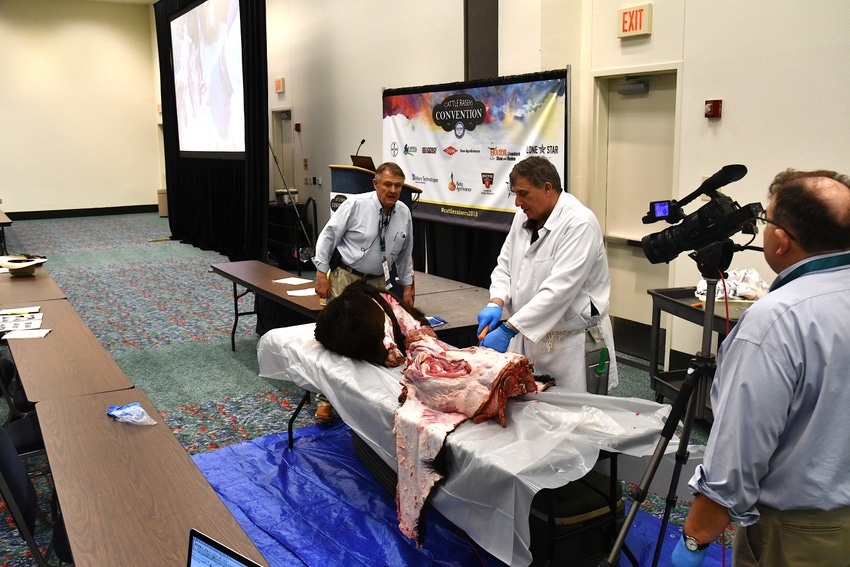Injection-site blemishes still among top 10 quality challenges and cause substantial loss of product.
April 10, 2018

At the recent Texas & Southwestern Cattle Raisers Assn. Convention in Ft. Worth, Texas, a team of Texas A&M AgriLife Extension Service specialists demonstrated how much injection-site blemishes can diminish the value of high-end cuts from the beef carcass.
Livestock specialist Dr. Joe Paschal, meat specialist Dr. Dan Hale and beef cattle veterinarian and food animal specialist Dr. Tom Hairgrove, all with AgriLife Extension, gave a demonstration on the value of selecting proper injection sites on cattle.
“We wanted to give beef cattle producers an overall perspective of injection sites and show them just what injection-site blemishes do in reducing the value and acceptability of the high-value cuts,” Paschal said.
He noted that, since the initial National Beef Quality Audit in 1991, injection-site blemishes still rank among the top 10 quality challenges and cause substantial loss of product, although progress has been made in reducing their impact.
The demonstration included injection-site samples of blemished cuts of beef round and sirloin as well as how to identify proper injection sites in the neck region. Though sometimes overlooked, proper placement of animal health product in the neck region can help preserve value further down the production chain, according to the AgriLife experts.
“When we move those injections to the neck area, we reduce damage to some of these high-value products and don’t hurt the value of the carcass nearly as much,” Paschal said. “Injections given in the muscle, deep inside the round and sirloin, those are high-dollar cuts relative to a muscle we find in the neck. That’s the whole purpose of the exercise: to try to minimize the reduction in value to those cuts.”
Hale noted that many years ago, ranchers gave injections of animal health products in the hindquarters of the animal.
“However, over the last 15 years, we’ve seen a lot of producers moving to the neck area,” he said. “We move it there to keep animal health product and injection blemish in the neck so it’s not in a high-price meat cut item. It’s a very effective way to put the animal health product in that location for recordkeeping and to make sure withdrawal times are properly followed before that animal leaves the premises.”
Hale said these and other practices are part of the Beef Quality Assurance program.
“Cattle producers across Texas and producers in general now have a better understanding of the valuable position they hold in helping ensure the food they produce for consumers is healthy,” Hale said.
A video of the demonstration can be found here.
You May Also Like

.png?width=300&auto=webp&quality=80&disable=upscale)

